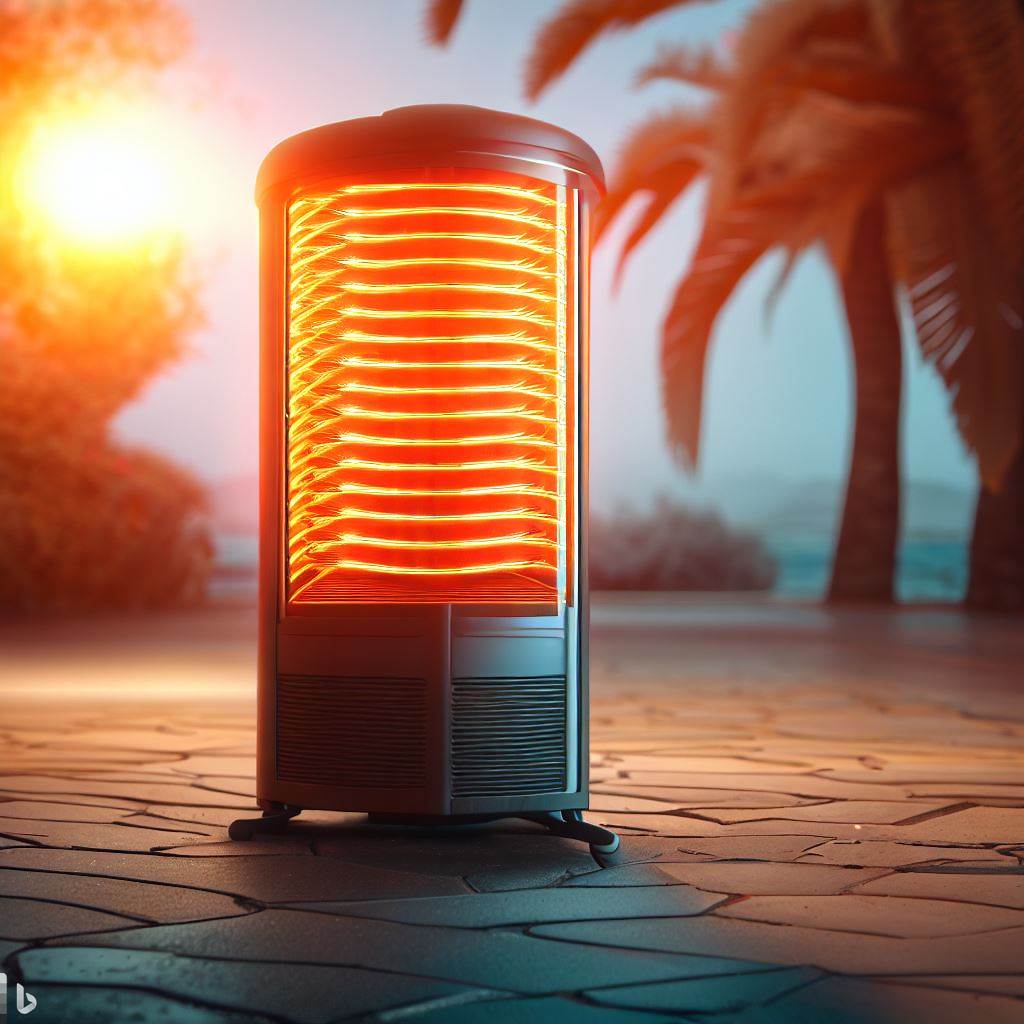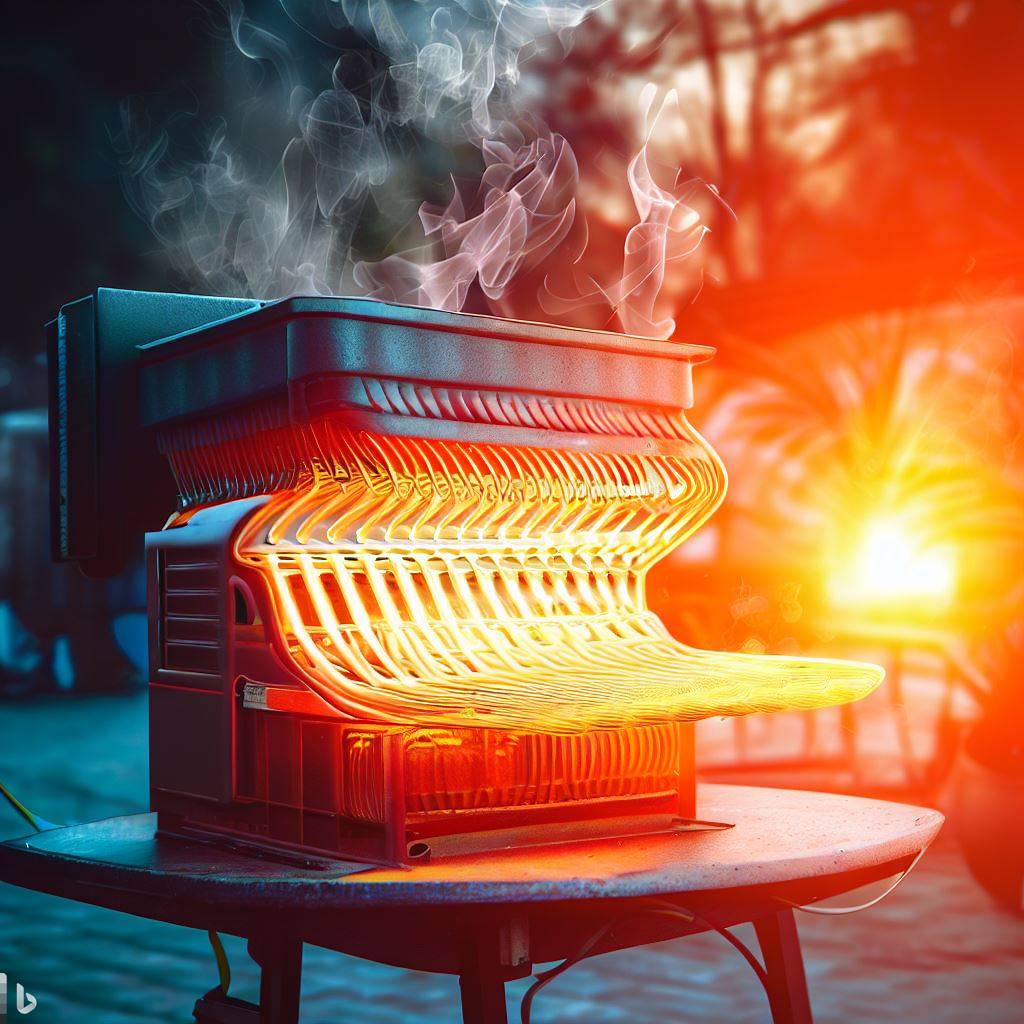Table of Contents
A convection heater is an energy-efficient way to heat a room. It circulates warm air evenly, instead of just heating specific objects or areas like some radiant heaters. It works by warming the air around it, so the entire room gets warm.
The heating element is usually made of coils or ceramic plates. Cool air gets drawn in and heated, then circulated back. This cycle makes sure the area gets warm.
Convection heaters are energy-efficient. They use less energy than radiant heaters and have thermostats to control the temperature. To maximize efficiency, insulate the room properly. That helps retain the generated heat and prevents cold spots.
Key Notes
- Convection heaters are generally considered to be energy efficient.
- The efficiency of a convection heater depends on factors such as insulation, thermostat settings, and room size.
- Proper insulation and sealing of windows and doors can help improve the efficiency of a convection heater.
- Using a programmable thermostat can help regulate the temperature and reduce energy consumption.
- Convection heaters are best suited for heating smaller spaces or individual rooms rather than large areas.
- Regular maintenance and cleaning of the heater can help maintain its efficiency.
- It is important to consider the overall energy consumption and cost-effectiveness when choosing a convection heater.
What is a convection heater?

A convection heater is a heating appliance that uses the natural process of convection to warm up a space. It circulates air currents, creating hot air that is absorbed by objects and surfaces, raising the temperature.
Convection heaters are popular in homes and offices. Unlike radiant heaters, they evenly distribute heat, making them perfect for larger rooms. Plus, they are energy efficient, using less electricity than fan or ceramic heaters. Many come with thermostats for controlling and maintaining a desired temperature.
To maximize energy efficiency, insulate the room by sealing drafts and gaps. Use a programmable thermostat to set times when the heater should be on or off. And, consider reflective panels behind the convection heater, which direct more heat into the room.
These tips will help make your convection heater even more energy efficient and cost-effective, while keeping you warm and cozy throughout colder months.
How does a convection heater work?

Convection heaters use an electric heating element or a hot fluid like oil to heat the air. It rises and circulates throughout the room, creating a convection current that spreads warmth. This air is released into the room through vents or grilles. Cooler air is drawn in to be warmed, ensuring consistent heating.
Convection heaters are great for larger areas with high ceilings or open floor plans. They are energy efficient, some models even have built-in thermostats that set temperature and regulate energy use. However, they may take longer to reach the desired temperature than other heaters.
Energy.gov reports that convection heaters can save up to 20% on heating costs compared to others. Understanding energy efficiency with convection heaters is like doing a magic trick with your electricity bill!
Energy efficiency Of Convection Heaters
Energy efficiency and convection heaters go hand-in-hand. These heaters convert electrical energy into heat efficiently, making them an economical choice. It’s important to think about the size of the area you’re heating and your home’s insulation.
When it comes to energy efficiency, consider the cost and performance of convection heaters. Even though they use continuous electricity, they still make for efficient heating solutions. Warm air is spread via conduction and convection processes.
Different types of convection heaters exist. Fan-forced heaters have fans that blow warm air quickly. Ceramic heaters have ceramic plates that heat up with electricity. Panel heaters have heating elements behind them that radiate heat.
Compared to radiant heaters and oil-filled radiators, convection heaters are more cost-effective. Radiant heaters heat only one spot or object. Oil-filled radiators use heating oil to generate warmth. Convection heaters, however, heat an entire room.
Using wise thermostat settings and efficient insulation within your living spaces will help regulate temperature and keep electricity usage low. Convection heaters are the perfect way to warm your wallet while cooling your room.
Are convection heaters energy efficient?
Convection heaters are the go-to for heating up homes and offices. They warm the air through convection to create a comfortable atmosphere. But are they energy efficient? Let’s take a look.
Yes, convection heaters can be energy efficient. It works by warming the surrounding air, which then rises. This creates an even warmth throughout the room. Plus, no fan is needed, so it operates quietly. This makes it great for bedrooms or other quiet areas.
You can also make use of thermostats to maintain the desired temperatures. This reduces energy use and stops overheating. In the long run, it will save you money and energy.
Tips for improving energy efficiency with convection heaters
I noticed my electricity bills were skyrocketing due to inefficient heating, so I invested in a ceramic convection heater. It provided instant warmth and I could easily adjust the temperature with a programmable thermostat. As a result, my heating costs have decreased significantly.

To maximize efficiency, follow these tips:
- Seal doors and windows
- Ensure good insulation
- Clean the heater regularly
- Position it closer to the target area
- Use a fan to evenly distribute warm air throughout the room
Comparing convection heaters to other heating options? It’s like choosing between a warm hug and a cold shoulder. Follow these tips for a cozy and energy-efficient home.
Convection heaters with other heating options
Convection heaters are a popular choice for heating homes and offices, but how do they compare to other heating options.
These devices heat the air and then circulate it throughout the room. This method ensures consistent warmth. It also does not directly warm specific objects like radiant heaters do. Furthermore, convection heaters are quieter than fan heaters.
If you’re considering a convection heater or any other heating option, here are some tips:
- Pick the right size: Get a heater that suits your space. A small one won’t warm a large room and a big one will consume too much energy.
- Use thermostats: Get a convection heater with built-in thermostats or external ones. This will help you maintain your desired temperature and save energy.
- Optimize insulation: Make your heating option more efficient by ensuring good insulation. This will trap the heat inside.
- Combine heating methods: Think about combining a convection heater with other heating devices like radiant heaters or portable fans. This will give you targeted warmth and comfort.
Follow these suggestions and you’ll make the most of your chosen heating option. Just remember that convection heaters may be energy efficient, but they’re also expensive.
Frequently Asked Questions
Is a convection heater energy efficient?
Yes, convection heaters are generally considered to be energy efficient. They work by heating the air in a room and circulating it, providing consistent warmth throughout the space. However, the energy efficiency can vary depending on the specific model and how well the room is insulated.
Are convection heaters expensive to run?
Convection heaters are generally more cost-effective than other types of heaters, such as fan heaters or radiant heaters. They use electricity to heat the air, which can be more efficient and cheaper compared to other fuel sources like gas or oil. However, the cost of running a convection heater will ultimately depend on factors such as the size of the room and the duration of use.
How does convection heating work?
Convection heating works by using convection currents to circulate heated air throughout a room. The heater warms the air, which then rises towards the ceiling, creating circulation as cooler air is drawn towards the heater to be heated in turn. This continuous cycle provides even warmth throughout the space.
Does a convector heater consume a lot of electricity?
Convector heaters generally have a lower wattage compared to other types of heaters, making them more energy efficient. However, the actual electricity consumption will depend on factors such as the size and insulation of the room, the desired temperature, and the duration of use. It’s always recommended to select a heater with adjustable thermostat settings to avoid unnecessary energy consumption.
Are convection wall heaters energy efficient?
Yes, convection wall heaters can be energy efficient. These heaters are usually mounted on the wall and use convection currents to warm the air in a room. They can be highly efficient, especially when combined with proper insulation and using thermostats to regulate the temperature. However, it’s important to consider factors such as room size and insulation to ensure optimal energy efficiency.
How do ceramic heaters compare to convection heaters?
Ceramic heaters are a type of convection heater that uses a ceramic heating element. They are known for their quick heating capacity and energy efficiency. The ceramic plates inside the heater heat up quickly and transfer the heat to the surrounding air, providing warmth in a short span of time. This makes them a popular choice for small spaces or when you need rapid heating.
Conclusion
Convection heaters are energy-efficient. They heat the air around them, which then rises and spreads throughout the room. This process makes sure the entire area is heated evenly.
They are also cost-effective to run. Electricity heats the air, making it more efficient than other heating types. Many convection heaters also come with thermostats to control the temperature, so energy use is optimized. In older homes, convection heaters were a popular choice for warmth. They provided consistent heat and spread it evenly. This made them a reliable option for many people.
